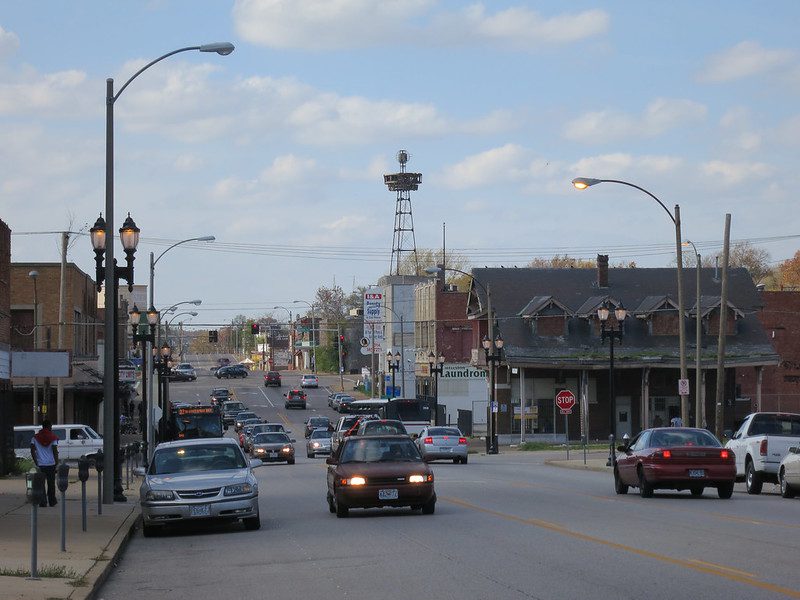I grew up in rural Iowa. During my childhood, my community was shaken by the collapse of family farms, the dismantling of the labor movement and the brutal restructuring of local economies. Even before I was old enough to articulate larger theories of politics or economics, I knew in my heart that something terrible was happening to people I knew and loved. It was terrible for their financial security, but, more devastating, it was terrible for their hearts and minds.
After searching for the words and the ideas that would really describe the crisis I witnessed unfold in my own community, I concluded that no perfect program, no single policy, no technical expertise would “fix” what ailed us. At root, it was a problem of power. We were powerless. And this powerlessness corrupts us and makes us sick. Therefore, our work needs to be to re-build and re-new our democracy and our democratic muscle, demanding widely distributed power and pathways for ordinary people have the ability to form and shape their common life with others.
I became a community organizer in the Alinsky tradition 12 years ago, a decade of which has been at ISAIAH, a faith-based community organization in Minnesota. This is my definition of organizing: Organizing is a set of strategic disciplines and practices to build the capacity of people to participate in and shape democratic life.
For years, I abandoned myself to the pure joy of learning the concrete, pragmatic and transformative craft of community-based organizing. I am and always will be a staunch defender of the community organizing tradition. I believe this work should be studied, stewarded and respected. We all have much to learn from the 40-year experiment to renew democracy and civic life called “community organizing.”
However, it must also be said that the last 40 years of community-based organizing has not changed America, and it has not made life better for the vast majority of people. Traditional community organizing failed to confront the large scale forces of income inequality, the consolidation of corporate power, the insidious and persistent racial injustice at the center American life, of the relentless shifting of economic power away from local communities and the force of a national conservative ideology in national politics. Community organizing has changed individual lives and even garnered meaningful, temporary gains for particular communities, but it has not changed America.
So… now what?
It is an exciting and dynamic time in the field of organizing. Something powerful, imaginative and new is happening. That’s what.
Across the field—from some of the traditional organizing networks such as PICO and National People’s Action to new forms of worker organizing such as the National Domestic Workers and powerful emerging state-based efforts such as the Ohio Organizing Collaborative or Minnesotans for A Fair Economy—there is a common conversation unfolding about what will be required of all of us to build the kind of movement that our communities deserve.
Although there are still many more questions than answers, here are some of the common themes emerging and that I will unpack in further posts with concrete examples from our work in ISAIAH:
-
Organizing Movement Organizations -
Fluid, Aligned Collaborations Across Movements -
Identity, Narrative and Political Consciousness -
Race and Class At the Center -
Building a Big Agenda for Change -
Organizing at Scale -
Integrating the Whole Spectrum of Social Change Strategies—Policy, Electoral, Traditional Organizing, Communications
The reasons I entered into the field of community-based organizing still stand. The problem is that regular people do not have the power to co-create their common life together. And now is the time to figure out the forms, strategies and structures which will make organizing relevant for our times.





Thank you for starting this new blog, Doran! I’m eager to read your further insights on the field. You are one of the creative, effective organizers who are forging a new path for impact of the work. I really value what you have to say.
And, now more than ever, people of faith need to come forward with their values which include that each one of us is created in God’s image and likeness, and therefore to be treated with dignity and respect and able to avail ourselves of the opportunities to grow and develop to our fullest potential. We certainly don’t have that yet, not in this country, not in our state and not in our communities. That’s the reason I’m on this boat with you, Doran.
I’m very interested in your thinking. I have spent 35 years doing some type of community organizing — usually in neighborhoods, but once with congregation-based organizing. I too would like to see a bigger impact for community organizing in this country.
But so often, I see organizing running aground on the same shoals that have sunk political parties, unions, social services, and our political process. These shoals are most always linked to lack of accountability — which comes from not enough people having the power to hold one another accountable.
Looking forward to your next post!